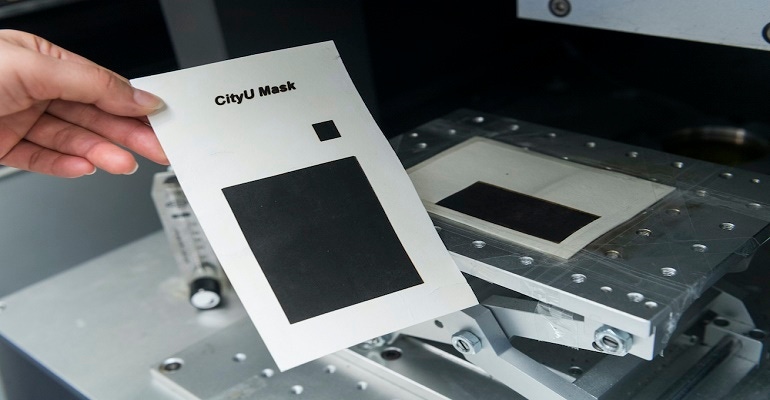Researchers in China hope the masks can be used to fight the novel coronavirus in the ongoing COVID-19 pandemic.
October 12, 2020

With so many people wearing face masks around the world due to the COVID-19 pandemic, scientists have been working to develop ones that are more effective at blocking viruses and bacteria.
Researchers at City University of Hong Kong (CityU), Hong Kong University of Science and Technology (HKUST), and Nankai University in China have come up with a solution for this by producing graphene-based masks with an anti-bacterial efficiency of 80 percent, a number that’s boosted to almost 100 percent with exposure to sunlight for 10 minutes.
The research was led by Ye Ruquan—assistant professor in CityU’s Department of Chemistry—who was inspired by previous work with graphene he conducted while studying for his PhD at Rice University.
There, he participated in research that discovered a way to produce graphene through direct writing on carbon-containing polyimide films. Polyimide is a polymeric plastic material with high thermal stability.
The direct writing was done using a commercial carbon-dioxide infrared laser system; the result was the generation of 3D porous graphene, produced when the laser changes the structure of the raw material. Hence, the new material is called “laser-induced graphene.”
Solving Mask Issues
While face masks have become a major tool in the fight against the coronavirus, they also can cause what’s called “secondary transmission” if they are used or disposed of improperly. Making them from graphene solves this issue, as the material is known for its anti-bacterial properties.
The wearing of face masks also has caused a lot of non-biodegradable waste, something graphene also solves, as masks made from the material can be reused and not immediately discarded. “It can lessen the environmental impact caused by the non-biodegradable disposable masks,” Ruquan said in a press statement.
The process to produce the graphene also is environmentally friendly and is low on energy consumption, he said. The conversion can be carried out under ambient conditions without using chemicals other than the raw materials, nor causing pollution.
Moreover, all carbon-containing materials, such as cellulose or paper, can be converted into graphene using this technique, which also has a low impact on the environment, Ruquan added.
“If biomaterials are used for producing graphene, it can help to resolve the problem of sourcing raw material for masks,” he said in a press statement.
Anti-Bacterial Strength
Researchers tested the efficacy of their graphene masks using the E.coli bacteria, finding that most of what was deposited on the graphene surface died after eight hours. Moreover, the laser-induced graphene showed a high anti-bacterial capacity for aerosolized bacteria.
Researchers published a paper on their research in the journal ACS Nano.
The graphene masks can be produced for a low cost, which means mass production of them for use in the COVID-19 pandemic are possible
The team is currently working with laboratories in mainland China to test the graphene material with two species of human coronaviruses. In initial tests, it inactivated more than 90 percent of the virus in five minutes and almost 100 percent in 10 minutes under sunlight.
The team eventually plans to conduct tests to see how the material works against the virus that causes COVID-19 specifically. Researchers also plan to use the material to develop a reusable mask that they hope they can release to the market shortly.
Elizabeth Montalbano is a freelance writer who has written about technology and culture for more than 20 years. She has lived and worked as a professional journalist in Phoenix, San Francisco, and New York City. In her free time, she enjoys surfing, traveling, music, yoga, and cooking. She currently resides in a village on the southwest coast of Portugal.
About the Author(s)
You May Also Like



